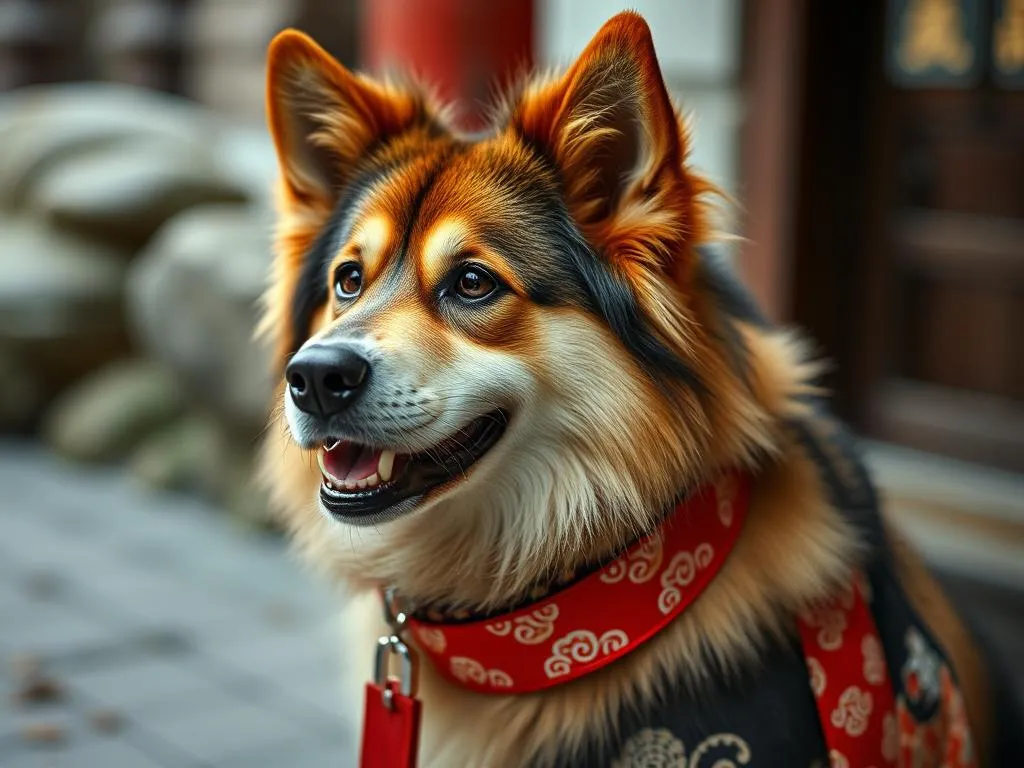
Dogs hold a significant place in Japanese culture and history, reflecting the deep-rooted relationships between humans and these loyal companions. From ancient times to modern urban settings, dogs have been cherished, revered, and sometimes even deified. This post explores the multifaceted roles dogs play in Japanese society, their historical contexts, cultural symbolism, and how they continue to shape contemporary life in Japan.
Historical Context of Dogs in Japan
Prehistoric Times
The bond between humans and dogs in Japan dates back to prehistoric times. Archaeological evidence suggests that dogs were among the first animals to be domesticated in the region. Early interactions likely revolved around hunting and survival, with dogs assisting in tracking and capturing game. This symbiotic relationship laid the foundation for a deep mutual dependence that has persisted throughout Japanese history.
Influence of Buddhism and Shinto
As religious beliefs evolved in Japan, the perception of dogs also transformed. Buddhism and Shinto, the two predominant religions in Japan, shaped attitudes towards animals, including dogs. In Shinto, certain deities are associated with dogs, exemplifying their revered status. For instance, the deity Inugami, a dog spirit, is believed to provide protection and good fortune. Myths and legends often highlight the loyalty and bravery of dogs, reinforcing their importance in Japanese spirituality.
Dogs in the Heian Period
During the Heian Period (794-1185), dogs were prevalent among both nobility and commoners. They served various purposes, from hunting companions to beloved pets. The period’s literature, such as “The Tale of Genji,” includes references to dogs, showcasing their role in the lives of characters. The Heian aristocracy often pampered their pets, which reflects the cultural status of dogs at that time.
Cultural Significance of Dogs in Japan
Symbolism of Loyalty and Protection
In Japanese culture, dogs symbolize loyalty, often encapsulated in the term Chūken (忠犬), which means “loyal dog.” This concept is epitomized in the story of Hachiko, an Akita who waited for his deceased owner at a train station for nearly a decade. Hachiko’s unwavering loyalty turned him into a national symbol of fidelity, inspiring countless tributes, including a famous statue at Shibuya Station in Tokyo.
Dogs in Art and Literature
Dogs have been a recurring motif in Japanese art, appearing in various forms such as paintings, ceramics, and textiles. Traditional artworks often depict dogs as symbols of good fortune. In literature, dogs feature prominently, serving as companions or pivotal characters in stories that explore human emotions and relationships. Notable works include “The Tale of the Heike,” which discusses various canine characters, reflecting their integral role in historical narratives.
Festivals and Celebrations
Japan hosts several festivals dedicated to dogs, highlighting their cultural significance. One such festival is Inuhariko, where people create small clay or paper dog figurines. These figurines are believed to bring good health and protection to families. Rituals associated with Inuhariko often involve prayers for the well-being of beloved pets, demonstrating the deep affection that Japanese people have for dogs.
Popular Dog Breeds in Japan
Native Japanese Breeds
Japan is home to several native dog breeds, each with unique characteristics and historical significance.
-
Akita Inu: Known for its loyalty and bravery, the Akita Inu was originally bred for hunting large game. Its dignified demeanor has made it a national symbol of fidelity.
-
Shiba Inu: The Shiba Inu is one of the oldest and smallest native breeds, originally used for hunting small animals. Its spirited personality and fox-like appearance have made it a popular pet in contemporary Japan.
-
Kishu Ken: This breed was traditionally used for hunting deer and boar. The Kishu Ken is known for its independence and strong instincts, making it a respected breed among hunters.
These native breeds reflect the historical roles dogs played in Japanese society, from working animals to cherished companions.
Modern Popular Breeds
In recent years, Western dog breeds have gained popularity in Japan, significantly influencing pet culture. Breeds such as the French Bulldog and Pomeranian are now common sights in urban areas. This shift towards smaller breeds can be attributed to the changing lifestyles of city dwellers, who often prioritize companionship and adaptability in smaller living spaces.
Contemporary Perspectives on Dogs in Japan
Dogs as Pets and Family Members
The perception of dogs in modern Japan has evolved dramatically. No longer merely working animals, dogs are increasingly seen as family members and companions. The rise of pet ownership has coincided with a shift in societal attitudes, where dogs are now considered integral to family life. This change is evident in the growing number of pet-friendly policies, such as accommodations and cafes that cater specifically to dogs and their owners.
The Rise of Pet Culture
Japan’s pet culture has burgeoned, leading to the emergence of various pet-related businesses and services. From luxury pet hotels to grooming salons, the market for pet care is thriving. Moreover, social media has played a significant role in promoting pet culture, with countless accounts dedicated to showcasing the lives of dogs, thus fostering a community of dog lovers.
Challenges Faced by Dogs in Society
Despite the positive aspects of dog ownership, challenges persist. Issues such as abandonment and stray dog populations remain concerning. Organizations and government initiatives are working to address these challenges, promoting responsible pet ownership and supporting shelters. The increasing awareness of animal welfare is a notable trend, reflecting a societal shift towards more humane treatment of animals.
Dogs in Media and Popular Culture
Representation in Anime and Manga
Dogs have a prominent presence in anime and manga, often symbolizing loyalty, friendship, and bravery. Series like “InuYasha” and “Ginga Nagareboshi Gin” feature dogs as central characters, conveying cultural messages about the bond between humans and dogs. These portrayals not only entertain but also reinforce the cultural values associated with dogs in Japanese society.
Dogs in Film and Television
Japanese cinema has produced several iconic films that highlight the relationship between dogs and humans. Movies such as “Hachi: A Dog’s Tale” tell the poignant story of Hachiko, further solidifying the dog’s place in the hearts of the Japanese people. These films often evoke strong emotional responses, illustrating the deep connections between dogs and their owners.
Influence of Technology and Social Media
In the digital age, social media has transformed how dogs are perceived and celebrated in Japan. Platforms like Instagram and TikTok are flooded with dog-related content, from adorable pet photos to heartwarming rescue stories. This trend not only promotes dog ownership but also fosters community engagement among pet lovers, creating a shared culture around dogs.
Conclusion
Throughout history, dogs have held a significant place in Japanese culture and history. From their early domestication to their revered status in spiritual beliefs, dogs have played various roles in society. Their symbolism of loyalty and protection continues to resonate, influencing contemporary perspectives and practices surrounding pet ownership. As Japan navigates the complexities of modern life, the bond between humans and dogs remains a cherished aspect of its cultural heritage. Understanding this relationship offers valuable insights into the Japanese way of life and the enduring significance of dogs in society.









